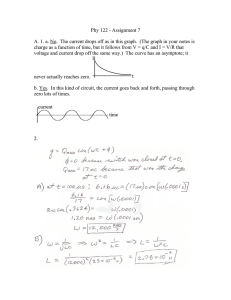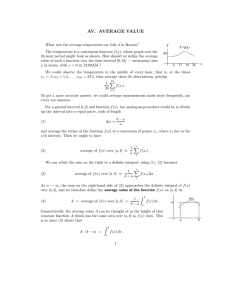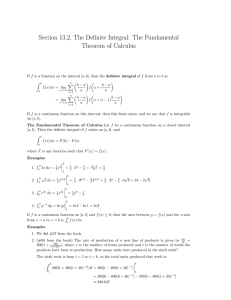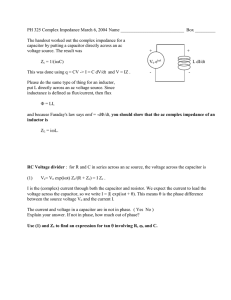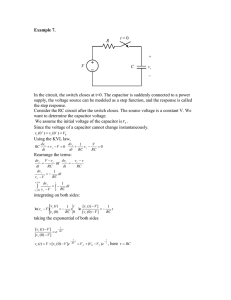Here the input voltage to the circuit is given by... The capacitor is fully discharged at time 0.
advertisement
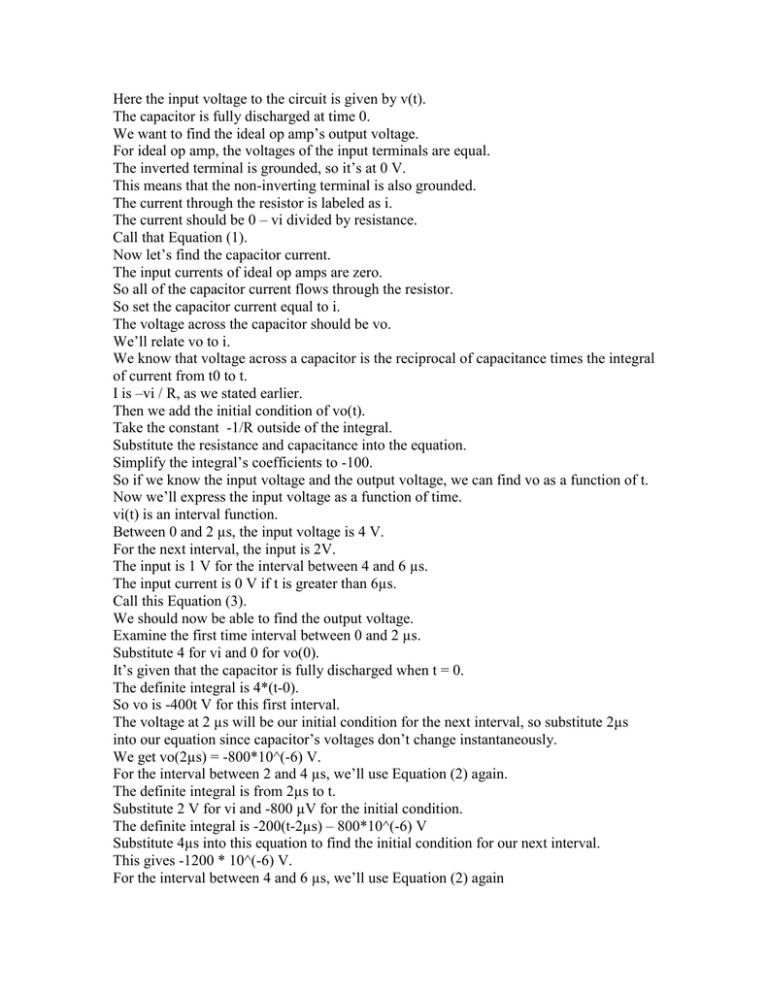
Here the input voltage to the circuit is given by v(t). The capacitor is fully discharged at time 0. We want to find the ideal op amp’s output voltage. For ideal op amp, the voltages of the input terminals are equal. The inverted terminal is grounded, so it’s at 0 V. This means that the non-inverting terminal is also grounded. The current through the resistor is labeled as i. The current should be 0 – vi divided by resistance. Call that Equation (1). Now let’s find the capacitor current. The input currents of ideal op amps are zero. So all of the capacitor current flows through the resistor. So set the capacitor current equal to i. The voltage across the capacitor should be vo. We’ll relate vo to i. We know that voltage across a capacitor is the reciprocal of capacitance times the integral of current from t0 to t. I is –vi / R, as we stated earlier. Then we add the initial condition of vo(t). Take the constant -1/R outside of the integral. Substitute the resistance and capacitance into the equation. Simplify the integral’s coefficients to -100. So if we know the input voltage and the output voltage, we can find vo as a function of t. Now we’ll express the input voltage as a function of time. vi(t) is an interval function. Between 0 and 2 µs, the input voltage is 4 V. For the next interval, the input is 2V. The input is 1 V for the interval between 4 and 6 µs. The input current is 0 V if t is greater than 6µs. Call this Equation (3). We should now be able to find the output voltage. Examine the first time interval between 0 and 2 µs. Substitute 4 for vi and 0 for vo(0). It’s given that the capacitor is fully discharged when t = 0. The definite integral is 4*(t-0). So vo is -400t V for this first interval. The voltage at 2 µs will be our initial condition for the next interval, so substitute 2µs into our equation since capacitor’s voltages don’t change instantaneously. We get vo(2µs) = -800*10^(-6) V. For the interval between 2 and 4 µs, we’ll use Equation (2) again. The definite integral is from 2µs to t. Substitute 2 V for vi and -800 µV for the initial condition. The definite integral is -200(t-2µs) – 800*10^(-6) V Substitute 4µs into this equation to find the initial condition for our next interval. This gives -1200 * 10^(-6) V. For the interval between 4 and 6 µs, we’ll use Equation (2) again The definite integral goes from 4 µs to t. Substitute 1 V for vi and -1200*10^(-6) V for the initial condition. The integral becomes -100*(t-4*10^(-6)). Capacitor voltage can’t change instantaneously, so substitute 6µs into this equation to find vo(6µs). [math calculations] This gives vo(6µs) = -1400*10^(-6) V. When t > 6 µs, vo will stay the same since our integral goes to 0. So the output will remain at -1400*10^(-6) V.
